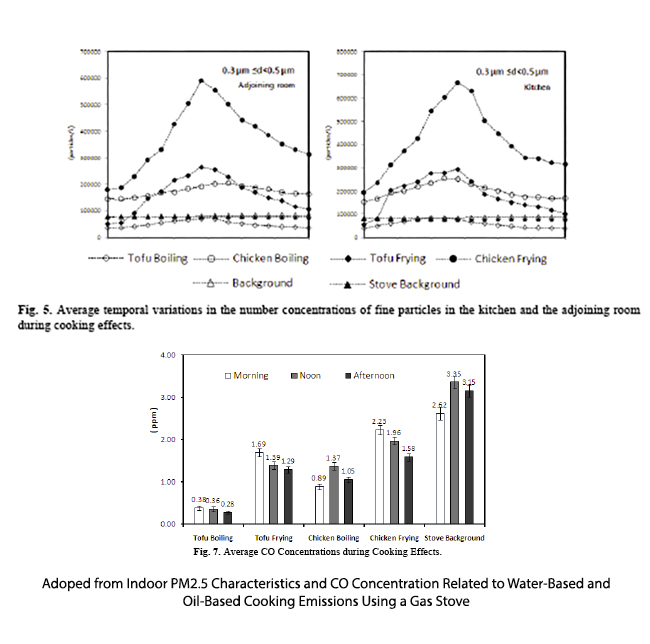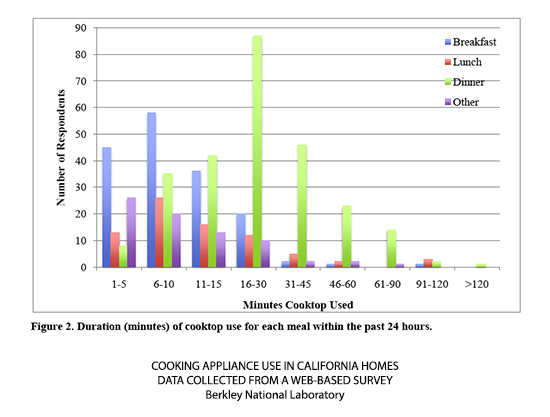The politicians have weighed in, from Senator Booker writing to the CPSC,
“…these emissions represent real health risks to millions of Americans. Both NO2 and PM2.5 are known to exacerbate respiratory conditions. Short-term exposure to NO2 is linked to worsening asthma in children, and long-term exposure has been determined to likely cause the development of asthma.”
To the more succinct and always quotable Governor DeSantis,
"When we say, ‘Don’t tread on Florida’ or ‘Let us alone,’ we mean that including on your gas stoves."
Who followed by launching a line of “Don’t tread on Florida” aprons on his campaign website.
But now that we have heard from our leaders, why don’t we as citizen scientists look at the paper that set off the concern, Population Attributable Fraction of Gas Stoves and Childhood Asthma in the United States? The study itself was straightforward. The researcher used census data to identify the percentage of US families with gas stoves, multiplied that percentage of children by the population attributable fraction (PAF), and mathmagically determined that nearly 13% of childhood asthma is attributable to gas stoves. The census provides reliable information on homes with gas stoves, so the magic lies in the other variable, PAF.
Population attributable fraction (PAF)
We must begin with understanding PAF. PAF is the estimated fraction of all cases of a particular outcome, in this case, asthma, attributable to a specific exposure, to gas stoves. Now there are no studies directly studying asthma and gas stoves, so PAF is approximated from observational studies where there is information on the prevalence of gas stoves and the relative risk of asthma. [1]
Using the word attributable implies a causal relationship. We may expect that to be true if assumptions underlying PAFs derived from observational studies, as these were, are met. PAFs assume “the estimated effect is adjusted for all confounders, … that there is a perfection intervention that eradicates the exposure.” This assumption is particularly vulnerable to criticism in this research.
After conducting a literature search of current studies, the researchers write that none presented new data,
“As a result, effect sizes previously reported for current asthma in North America and Europe … were utilized in the PAF estimations.”
The casual reader will assume that the researchers used valid data; after all, this is a peer-reviewed paper. But to understand the current study's fatal flaw, we have to venture a bit further down the rabbit hole to consider how their source of truth, Meta-analysis of the effects of indoor nitrogen dioxide and gas cooking on asthma and wheeze in children, determined these values.
The Actual Data
That meta-analysis examined 41 studies examining “exposure to indoor NO2 or household gas cooking or gas heating.” The measured outcomes, wheezes, and asthma, physician-noted or self-reported. Their calculations of PAF considered multiple factors, but rather than multiple adjustments, the PAF only adjusted for “smoking in the family." Here is their conclusion,
“Gas cooking produces NO2 and other pollutants such as ultrafine particles. Our finding of an association between gas cooking and asthma in the absence of an association between measured NO2 and asthma suggests that gas cooking may act as a surrogate for causal variables other than air pollutants produced by gas combustion.” [emphasis added]
They did not identify an association between asthma and NO2. They found gas cooking to be a surrogate, a confounder for other factors driving childhood asthma.
If their calculated PAF is not attributable to the pollutants of gas cooking, the PAF used in the most current study is not attributable to pollutants of gas cooking either. With a nonsensical PAF, the current study’s calculations, specifically that 13% attribution, is Mathmagic.
What might those other causal variables be?
 A 2001 study in Pediatrics suggested that 44% of asthma was due to residential risk factors. Gas cooking and heating were not significant, nor was the use of exhaust fans. The two largest PAFs are the presence of a pet, and atopy, a predisposition of allergic reactions, in the parents.
A 2001 study in Pediatrics suggested that 44% of asthma was due to residential risk factors. Gas cooking and heating were not significant, nor was the use of exhaust fans. The two largest PAFs are the presence of a pet, and atopy, a predisposition of allergic reactions, in the parents.- How you cook also makes a difference. Here is some data on fine particulates PM5 levels, another presumptive villain, and carbon monoxide (CO) when frying or boiling
- CDC data indicated that 45% of the 55% of children prescribed asthma medication do not use it as
 regularly prescribed. This raises the question of the affordability of these medicines, and if one is having a problem affording medicines, what does that say about the ventilation and construction of their indoor environments?
regularly prescribed. This raises the question of the affordability of these medicines, and if one is having a problem affording medicines, what does that say about the ventilation and construction of their indoor environments? - A survey of California homes, which uses gas cooking the most among the states, indicated that the gas stove use varied with the presence of children, ethnicity, day of the week, and which meal was being made. We might estimate total use of gas stoves for cooking to be about an hour daily.
The science literate, who spent time reading and understanding a study on a valid health problem, asthma, must come away knowing that concluding “12.7% of current childhood asthma nationwide is attributed to gas stove use” is just incorrect.
The media can be forgiven; they cannot help themselves when given an attention-grabbing headline; it is the nature of that beast. More critically, our leaders, the individuals entrusted through our votes to look out for our interests, appear to have a literacy problem, or their due diligence ends with a briefing or reading a paper’s abstract. Regulatory agencies, like the CPSC, should base decisions on something less flimsy than this house of cards.
[1] For those who just have to know: PAF can be estimated from relative risk (RR) and prevalence of exposure (pc) PAF = pc(1 − (1/RR))
Source: Population Attributable Fraction of Gas Stoves and Childhood Asthma in the United States International Journal of Environmental Research and Public Health DOI: /10.3390/ijerph20010075
Meta-analysis of the effects of indoor nitrogen dioxide and gas cooking on asthma and wheeze in children International Journal of Epidemiology DOI: 10.1093/ije/dyt189




